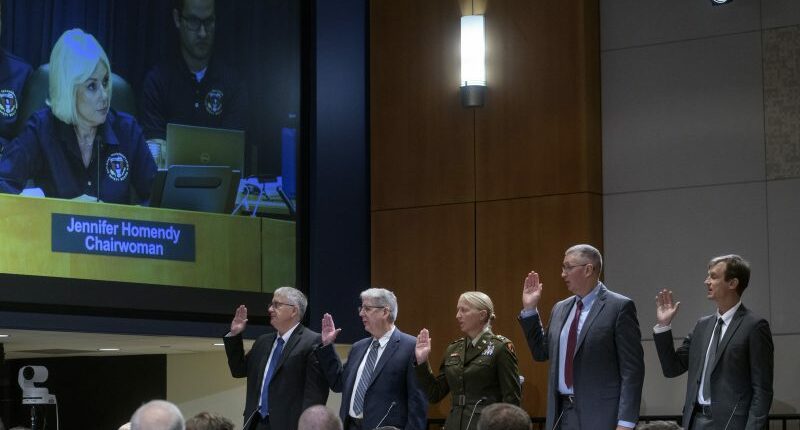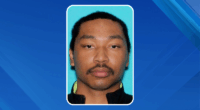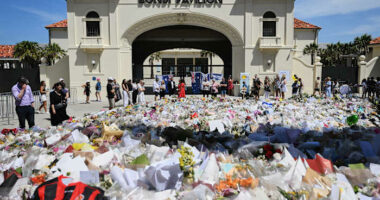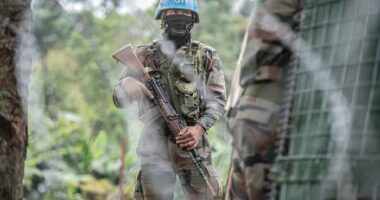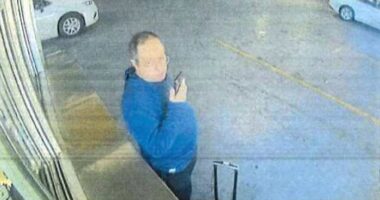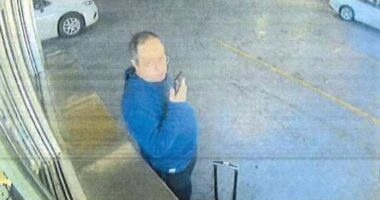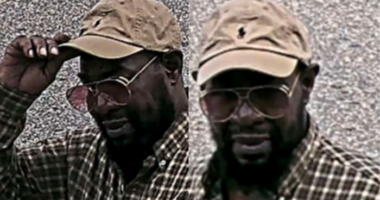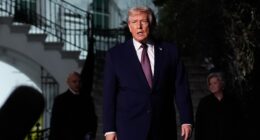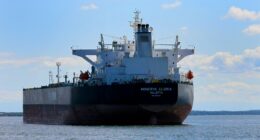Share this @internewscast.com

The National Transportation Safety Board is in the midst of its third and last day of public hearings concerning the deadly midair collision between an Army helicopter and a commercial jet that occurred in January.
During the initial two days of hearings, several factors that likely led to the tragic crash, which resulted in the deaths of all 67 individuals aboard both aircraft, were highlighted. This prompted Board Chairwoman Jennifer Homendy to call on the Federal Aviation Administration to improve, citing previous warnings the agency had overlooked.
Key issues identified include the Black Hawk helicopter flying higher than authorized near Ronald Reagan National Airport, alongside longstanding warnings to FAA officials about the risks posed by the heavy helicopter traffic in the area.
It’s too early for the board to identify what exactly caused the crash. A final report from the board won’t come until next year.
It also became evident this week how minimal the margin for error was for helicopters following the path that the Black Hawk took during the nation’s deadliest plane crash since November 2001.
The January midair collision marked the first in a series of crashes and near misses this year that have raised concerns among officials and the public, despite continued data supporting flying as the safest transportation mode.
Worry over military helicopters
The board’s inquiry concentrated on air traffic control and revealed on Thursday that it was common practice for pilots to request relying on visual separation, using their eyesight, as the Army Black Hawk’s pilots did with the aid of night vision goggles on the night of the incident.
FAA officials also said controllers relied heavily on pilots using visual separation as a way to manage the complex airspace with so many helicopters flying around Washington D.C.
But Rick Dressler, an official with medevac operator Metro Aviation, told the board it is difficult to identify other aircraft in the night sky around Ronald Reagan National Airport, especially if a key onboard locator system was switched off, as Army choppers routinely did.
Dressler said that he and other civilian helicopter pilots in the area have long been concerned about the Army and Air Force helicopters flying around Reagan airport.
“I don’t like saying this. I’ll say it again on the record,” Dressler, a former Army aviator and retired Air Force officer, said. “I’m speaking for my group there. We we are all very uncomfortable when those two units are operating.”
The Department of Defense referred questions about Thursday’s testimony to the Army, which did not immediately respond. Army officials at the hearing did ask Dressler to elaborate on his concerns and consider visiting the Pentagon to share them.
Dressel said part of what worries him is the relative lack of experience of the military pilots who may have only been in the area a short time and don’t understand the complex airspace around Washington D.C.
“They don’t get the seasoning here to really, truly understand how the airspace works,” said Dressel, who also complained that the Army helicopter unit no longer participates in regular meetings with all the other aviators in the area to discuss issues.
The Air Force also did not immediately respond to questions about Dressler’s remarks.
The American Airlines jet arrived from Wichita, Kansas, carrying, among others, a group of elite young figure skaters, their parents and coaches, and four union steamfitters from the Washington area.
Final moments
Testimony covered much ground, including the final audio communications from pilots aboard the Army chopper.
The Black Hawk’s crew had been communicating with the airport’s control tower, although the helicopter pilots did not fully hear the controller’s instructions.
The Black Hawk pilots told the tower twice in the minutes before the crash that they had the American Airlines passenger plane in sight and would maintain proper separation. But when the controller instructed the pilots to “pass behind” the jet, the crew didn’t hear that instruction because the Black Hawk’s microphone key was pressed at that moment.
Just before the collision an instructor pilot aboard the helicopter asked the pilot at the controls to come left. But it wasn’t clear if the pilot had time to maneuver the helicopter before the crash.
“Kinda come left for me ma’am,” the instructor said.
The pilot responded: “Sure.”
Concern about distances between planes and helicopters
John Cox, an aviation safety expert and retired airline pilot, said the hearings are headed in the right direction to determine what happened and to prevent similar accidents.
His main concerns focus on the Black Hawk helicopter, including why it was above the 200-feet (61 meters) elevation limit for that particular helicopter route. Another question is why the Black Hawk wasn’t closer to the east bank of the Potomac River, where it would have been further away from landing airplanes.
“I’ve passed helicopters underneath me over the east bank of the Potomac a lot of times,” said Cox, who flew commercial airliners for 25 years. “And there’s always been plenty of separation. It’s not a lot because the space is so constrained. But you’re dealing with professional pilots and it’s not been a problem.”
Investigators said Wednesday the flight data recorder showed the helicopter was actually 80 feet to 100 feet (24 to 30 meters) higher than the barometric altimeter the pilots relied upon showed they were flying.
